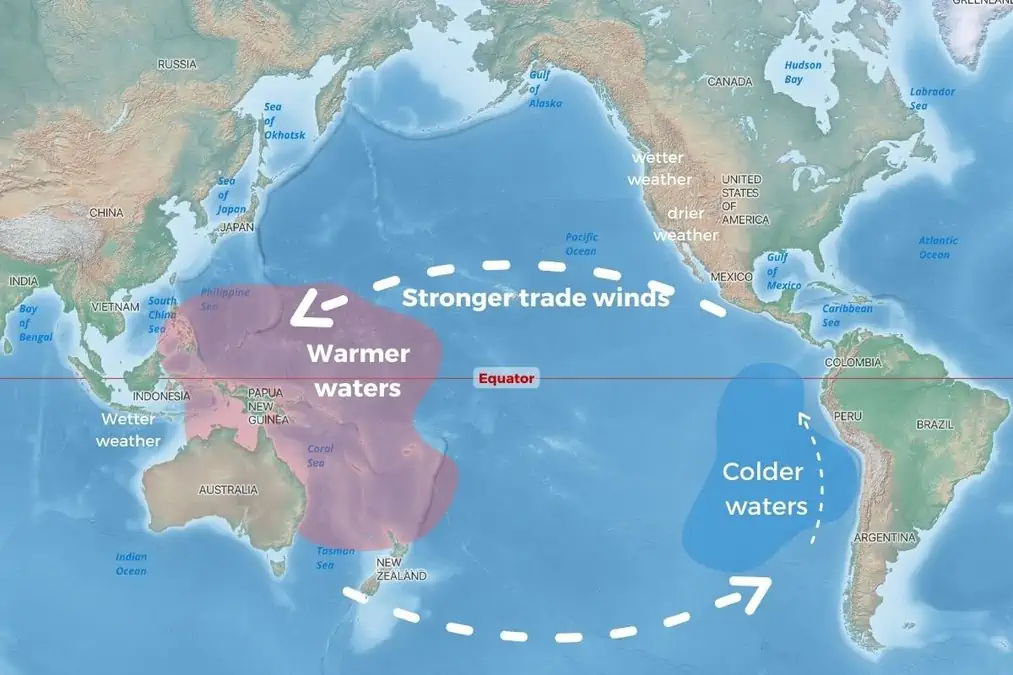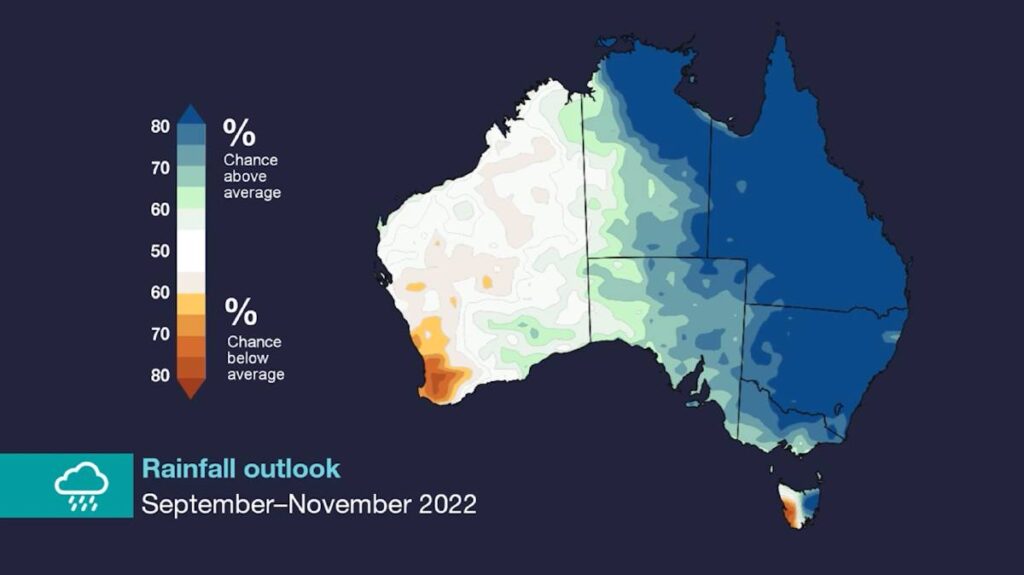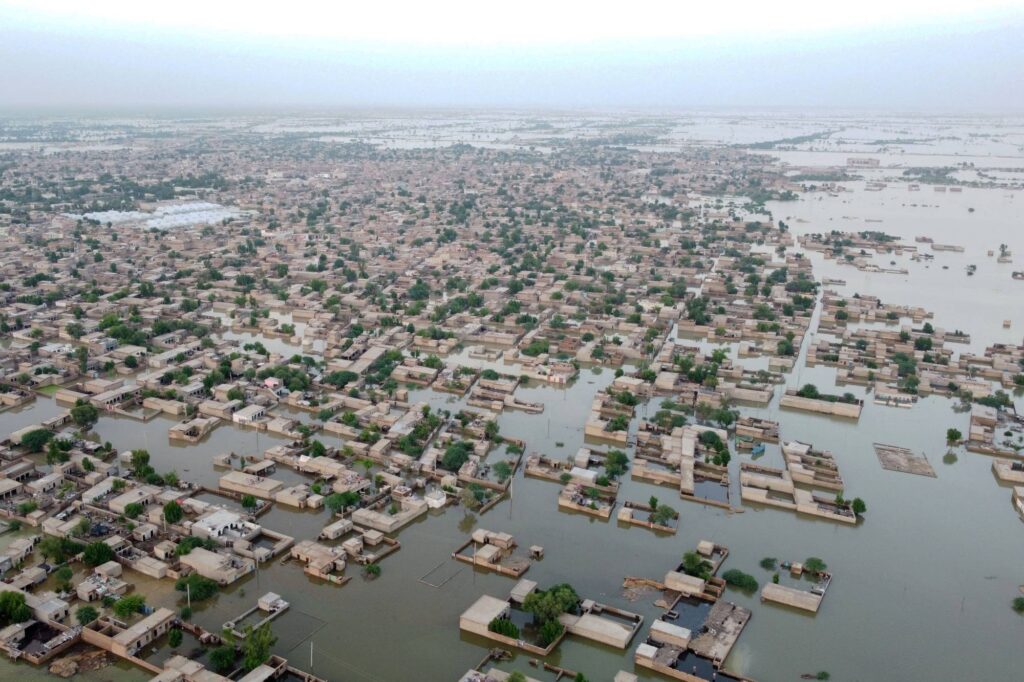La Nina is on the Horizon: Here’s What You Need to Know

The World Meteorological Organization has warned La Nina is set to impact the climate for another consecutive year. This would mean three straight winters (Northern Hemisphere) and summers (Southern Hemisphere) of increased rain and cooler temperatures.
The Australian Bureau of Meteorology has also issued a La Nina alert for the 2022/23 summer season. It has indicated a 70% chance of it occurring. La Nina usually occurs every 2-7 years which can last for several months. So it’s important to be aware of the potential impacts on your region.
La Nina is caused by unusually cold ocean water temperatures in the equatorial Pacific region. This can lead to increased rainfall and cooler temperatures across North America, Europe, Asia, and Australia.
While the experts’ forecast should be taken seriously, there is always the possibility that the weather patterns will change course. Let’s hope that’s the case this year!

There is a high chance of above-average rainfall for the eastern half of Australia. While Western Australia and western Tasmania are expected to be drier. Picture supplied by Bureau of Meteorology.
What is La Nina?
La Nina is a weather phenomenon that refers to the cooling of ocean surface temperatures in the central and eastern tropical Pacific. This has far-reaching consequences because it alters global weather patterns.
Its conditions are associated with strong winds that blow warm water from the ocean’s surface away from South America and towards Indonesia. This in turn leads to cold water from the deep sea rising to the surface near South America. La Nina can have a dramatic impact on weather patterns around the world, causing floods and droughts in different areas.
While it is often considered to be a naturally occurring phenomenon, some scientists believe that it may be exacerbated by human activity, such as greenhouse gas emissions. Regardless of its cause, La Nina is a complex and fascinating weather pattern that continues to influence our planet in both predictable and unpredictable ways.
How does La Nina form?
La Nina events are usually triggered by a weakening or reversal of the trade winds in late spring or early summer. This gives rise to lower than normal sea surface temperatures in the east-central Pacific Ocean near the equator. The cooler ocean water then affects global atmospheric circulation patterns, influencing weather patterns all around the world.
La Nina typically occurs every three to five years, but Australia has already experienced two back-to-back in 2020 and 2021. This has brought heavy downpours and flooding to much of the country. As La Nina events can last for several months there is a risk of further flooding in Australia.
What are the impacts of La Nina?
Some of the impacts of La Nina in Australia include increased rainfall along the east coast, above-average cyclone activity and more damaging thunderstorms. Flooding, landslides and rural property damage are also possible during a La Nina event.
La Nina years often bring increased cyclone activity, particularly in northern Australia and bring increased rainfall and flooding. It is important to be aware of the potential risks in your area.
The recent floods in Asia have been devastating, with Pakistan facing an unprecedented disaster that has claimed hundreds of lives and millions displaced or otherwise affected. Likewise, other countries such as Thailand also experienced natural disasters last month which left many people homeless.

Image credit: AFP-JIJI
Flooded residential areas after heavy monsoon rains in Dera Allah Yar town of Jaffarabad district, Balochistan province, Pakistan, on Thursday 13/9/2022.
Given the large geographical scope over which La Nina conditions can impact temperature and weather patterns. La Nina can have significant global implications. Ultimately, La Nina is a complex weather pattern with far-reaching effects that continues to warrant further study.
Conclusion:
While we don’t know exactly what this upcoming La Nina season has in store, we do know that it has the potential to bring some significant weather changes our way. Stay up-to-date with the latest forecasts and follow any advice from emergency services if they issue warnings for your area.
Floods and water means the best conditions for many pests to thrive. Floods can bring mosquitoes and other disease-carrying insects into your home. The snakes will look for places to hide from sun exposure or rushing water outside; all of which could put you and your family at great risk.





 Mosquito Traps
Mosquito Traps